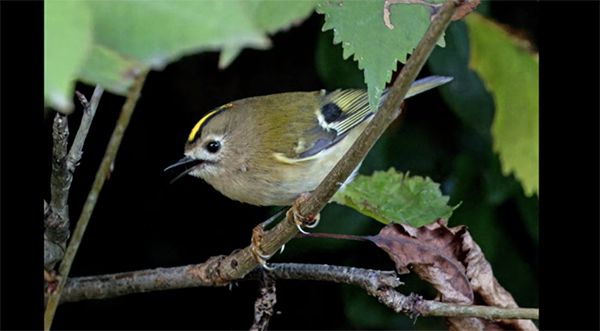Garden experts want you to bury this fruit bowl staple in your roses this July for brighter, bolder flowers in autumn
Your roses will thank you for it
 REAL ESTATE
REAL ESTATE
 REAL ESTATE
REAL ESTATE
 REAL ESTATE
REAL ESTATE
 REAL ESTATE
REAL ESTATE
 REAL ESTATE
REAL ESTATE
 EVENT
EVENT
 LANDSCAPE
LANDSCAPE
 LANDSCAPE
LANDSCAPE
 CONCERT
CONCERT
 LANDSCAPE
LANDSCAPE
 TRAVEL
TRAVEL

REAL ESTATE
Residential, Commercial, Interiors

LANDSCAPE
Landmarks, Cityscape, Urban, Architectural

FOOD
Hotels, Restaurants, Advertising, Editorial

PORTRAIT
Traditional, Glamour, Lifestyle, Candid

PRODUCT
Studio, Lifestyle, Grouping

EVENT
Conference, Exhibition, Corporate

FASHION
Portrait, Catalog, Editorial, Street

TRAVEL
Landscape, Cityscape, Documentary

SPORT
Basketball, Football, Golf

CONCERT

STILL

STREET
The proper use of depth-of-field effects is an important component of all great outdoor photographs, and we often use camera settings and techniques that accentuate a main subject by limiting the zone of sharpness to soften backgrounds and deemphasize other areas within the frame.
There are other scenes, however, that call for maximum sharpness from front to back. Images like this are difficult (if not impossible) to capture in the camera with a single shot unless you own some very specialized gear. However, It’s easy to get the job done with a simple focus-stacking technique in Lightroom or Photoshop.
Instructor Matthew Gehly specializes in wildlife and landscape photography, two popular genres where this post-processing technique can prove especially valuable. In barely five minutes he demonstrates how to capture multiple images, each with a difference focus point, and combine them to create a single, spectacular photo with sharpness all the way from here to there.

Gehly’s subject is a beautiful landscape in a forested area with an interesting, covered bridge spanning a bubbling brook. As he explains, you’ll want to begin in the camera by strategically focusing on three different places as you strategically capture a trio of shots with the camera locked down atop a sturdy tripod so the composition doesn’t shift even slightly from one photo to the next.
It doesn’t really matter whether you work from front to back, or back to front. Once you have the necessary photos, the next steps involve opening your post-processing software, adjusting the photos appropriately, and merging them into a natural-looking composite “for stunning depth for field.”

The simple process is far easier to understand while watching Gehly illustrate how it works, so we’ll avoid slowing thing down by providing our usual summary. The bottom line is this: Once you get the hang of this transformative technique you’ll want to add it to your everyday workflow.
Gehly’s YouTube channel is a great source of how-to videos on various Adobe techniques, so be sure to pay a visit and explore.
And speaking of combining multiple images, don’t miss an earlier tutorial we featured with another post-processing expert who demonstrates how he merges two or more photographs with different framing into one eye-catching masterpiece with a straightforward Photoshop compositing technique.
If you’ve never taken a deep dive into the menu, you may be surprised that the camera offers a choice of three Shutter modes; namely, Mechanical, Electronic, and Elect. 1st-Curtain. I’s important to understand when to select one mode over another, and that’s what you’ll in this quick explainer from the Stormcabbirds YouTube channel.
Many of you purchased a new mirrorless camera specifically because you wanted the benefits of a silent electronic shutter with no mechanical sounds that can easily scare off subjects when shooting wildlife in the field. Or maybe your genre is indoor performance imagery where being discreet is super important.

Some photographers even think of Shutter mode as a set-it-and-forget-it affair, choose Electronic, and never consider the other two options again, If so, they’re in for a big surprise in the following video from a British veteran who specializes in everything from travel, street, and bird photography.
According to our instructor there’s a second big surprise: The Electronic Shutter mode isn’t always what it’s cracked up to be. He put is like this, “There are benefits and drawbacks to each of the three Shutter modes depending on your subject.”
As mentioned above, the headline feature of an Electronic shutter is it’s completely silent operation, plus the fact there are no moving parts to induce camera shake—especially valuable for both macro and wildlife photography. And there are the ultra-fast burst that aren’t available with mechanical shutters.

Unfortunately all this versatility comes along with a few problems and limitations in certain situations, and you’ll earn exactly what they are. The discussion takesa similar approach to demonstrating the pros and cons of the other two Shutter modes in the menu that you probably won’t ignore in the future.
There’s much more to learn on the Stormcabbirds YouTube channel, especially when it come to bird photography tips, gear, and techniques.
Be sure not to miss the other camera-setting guide we featured recently, explaining why a combination of Shutter Priority and Auto ISO modes is a game-changing technique for capturing subjects in motion during everchanging light.
